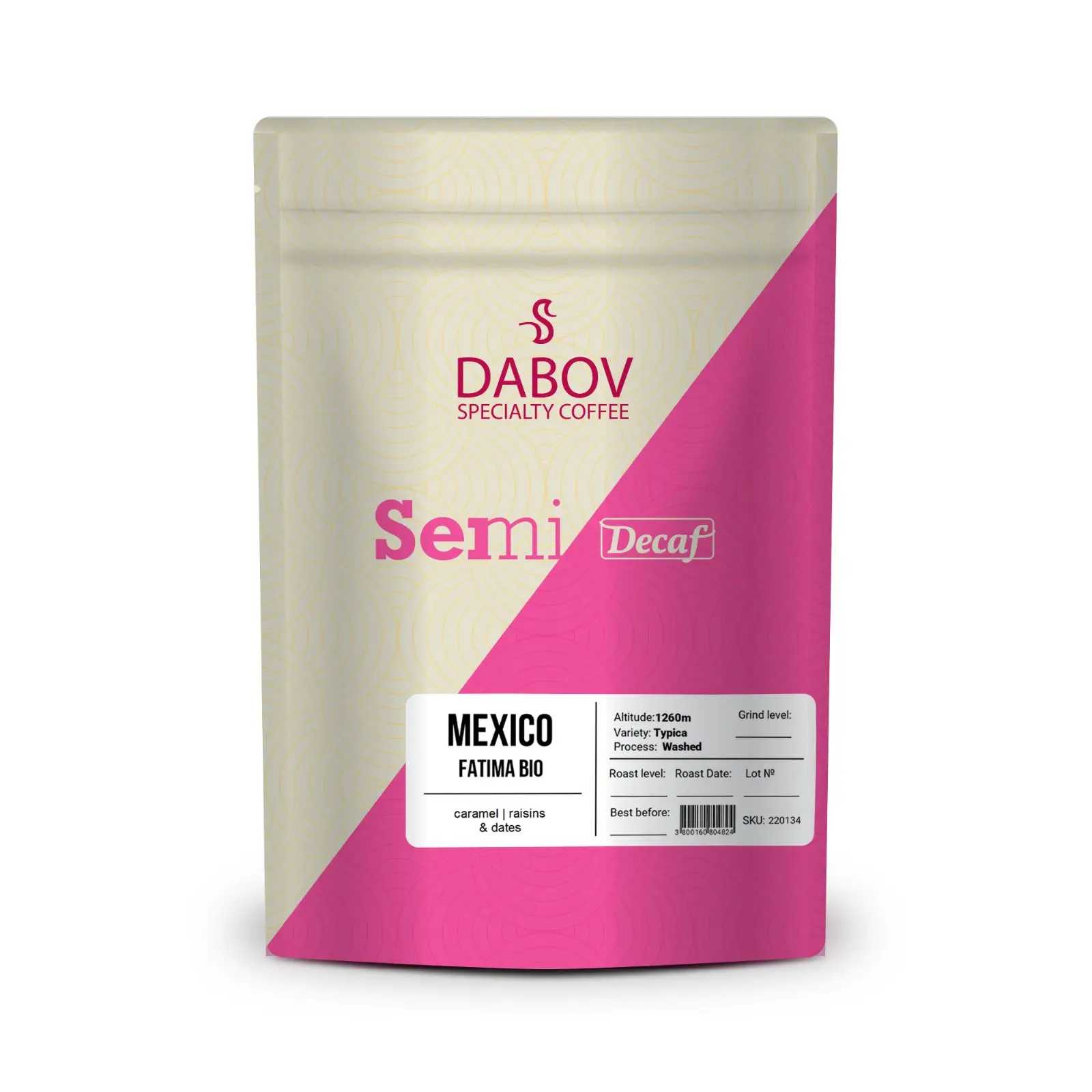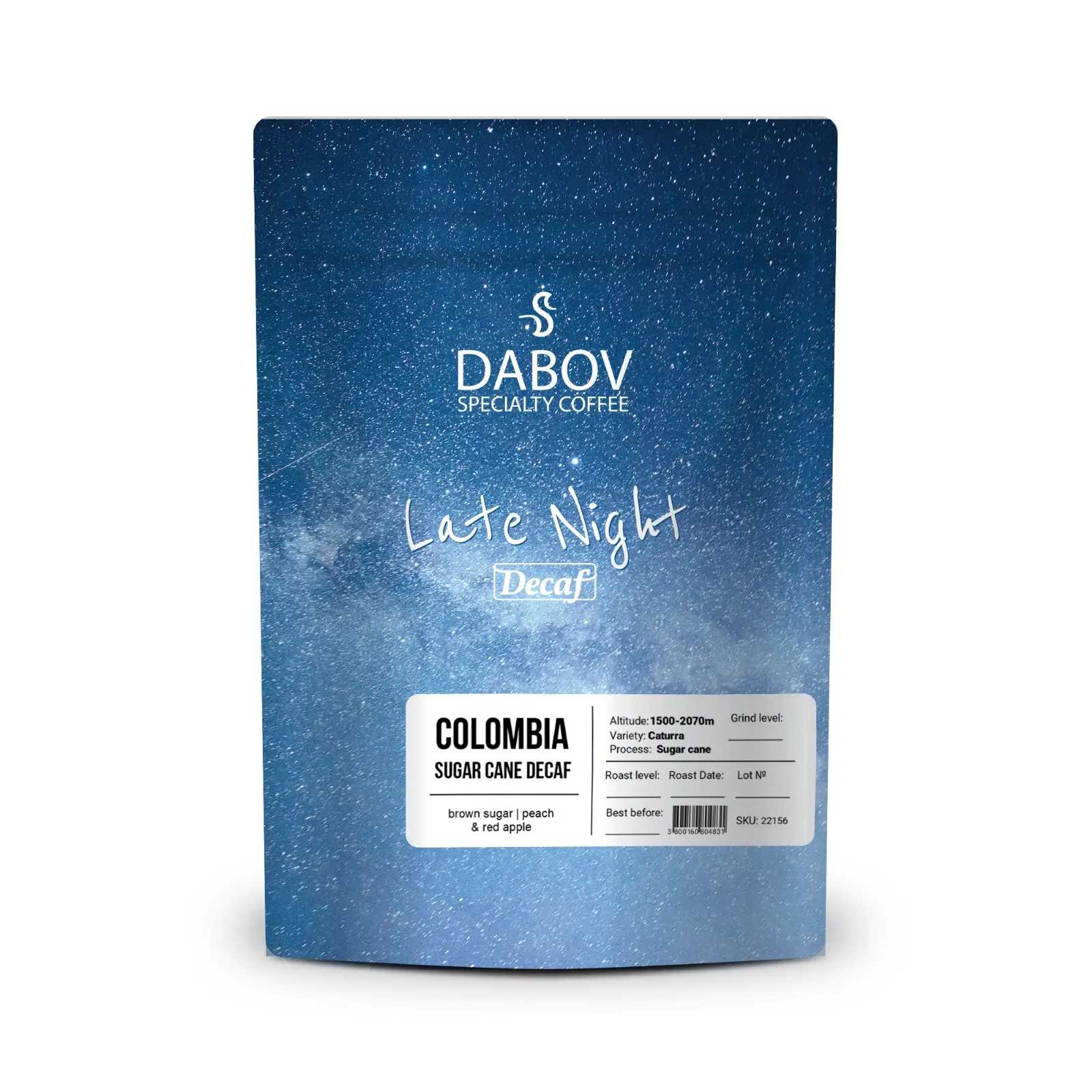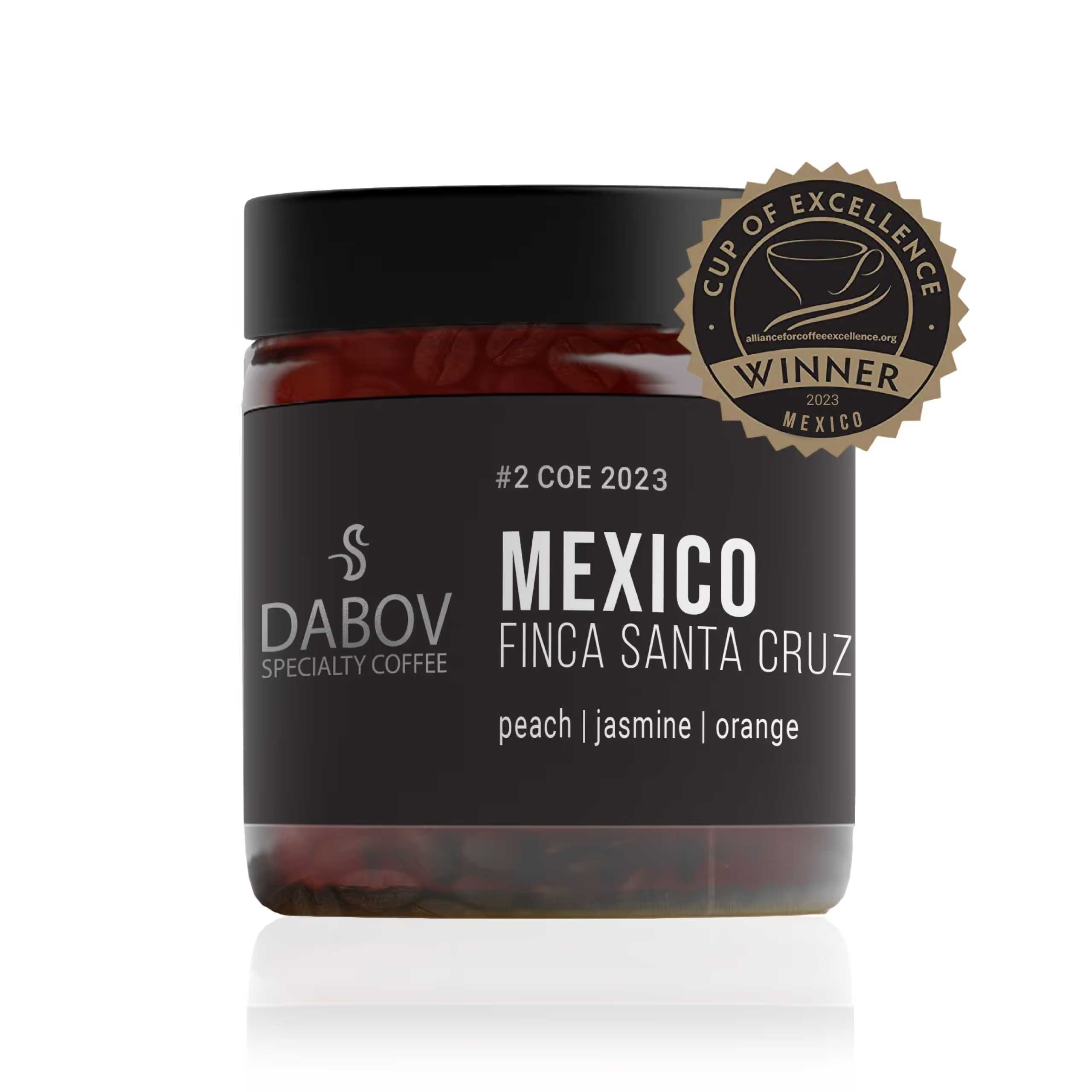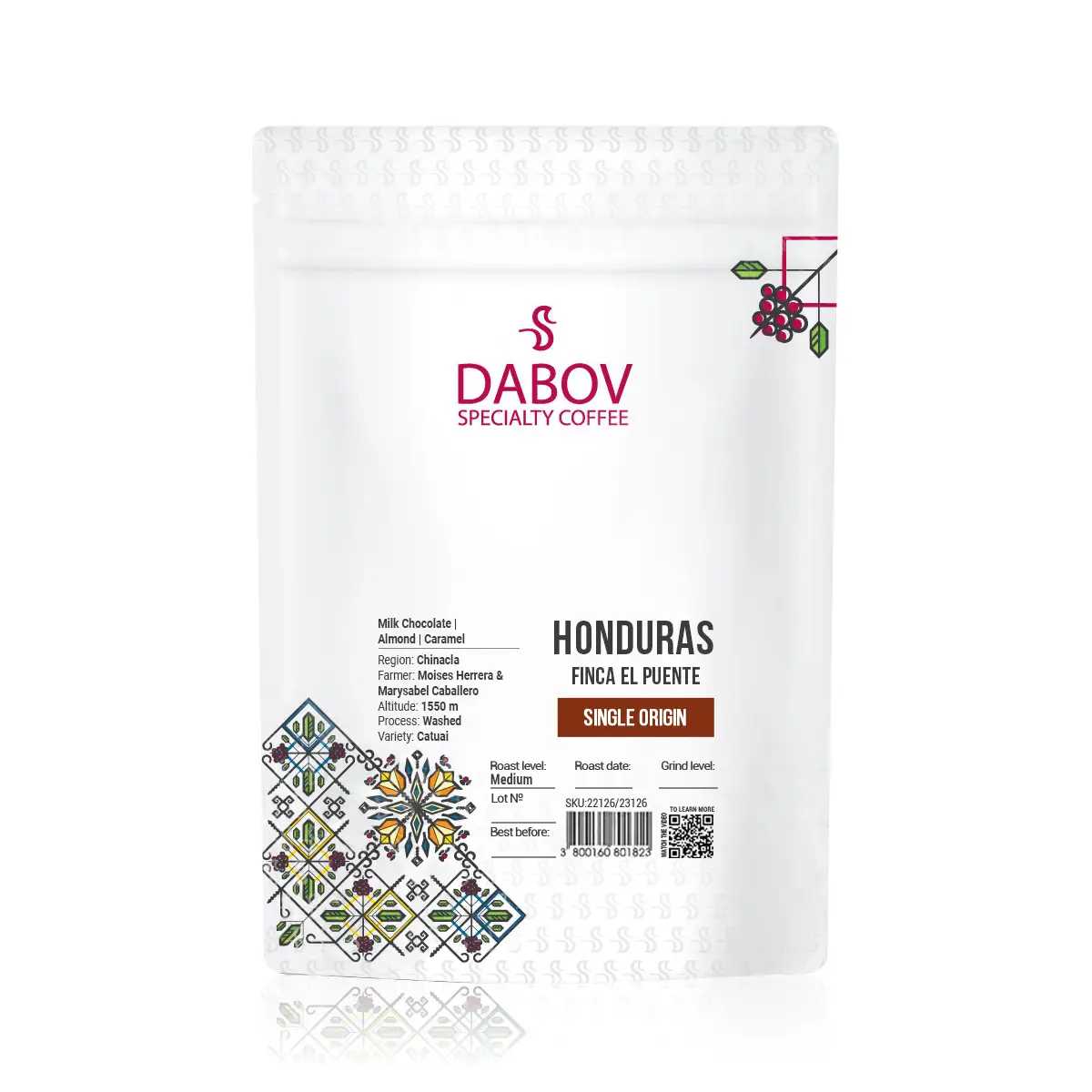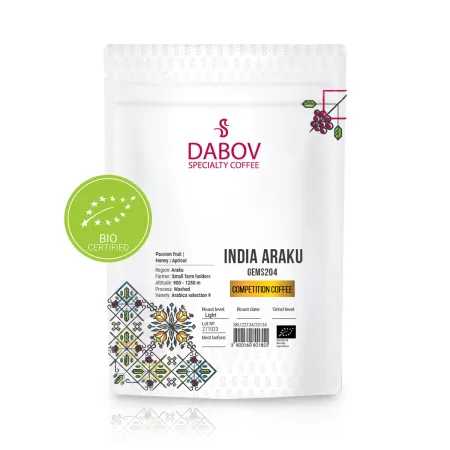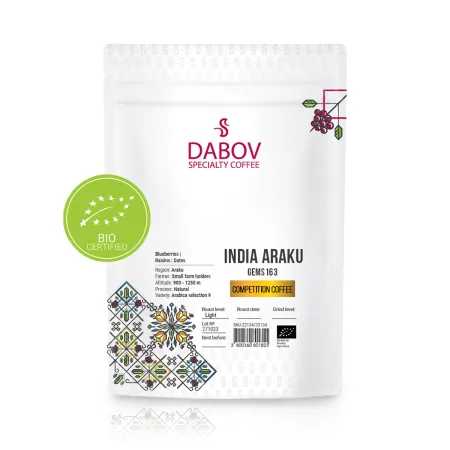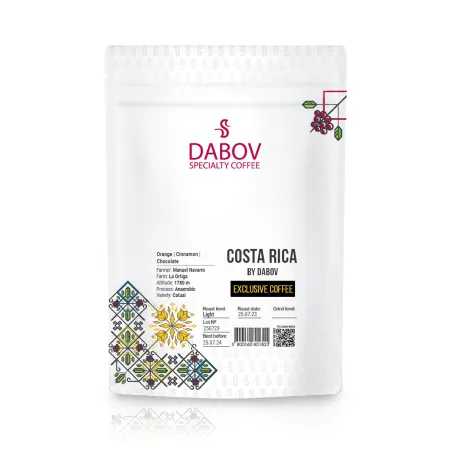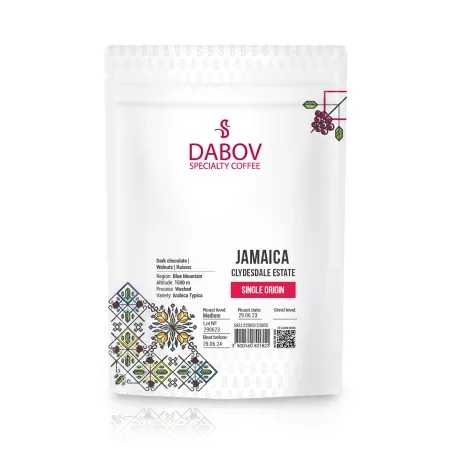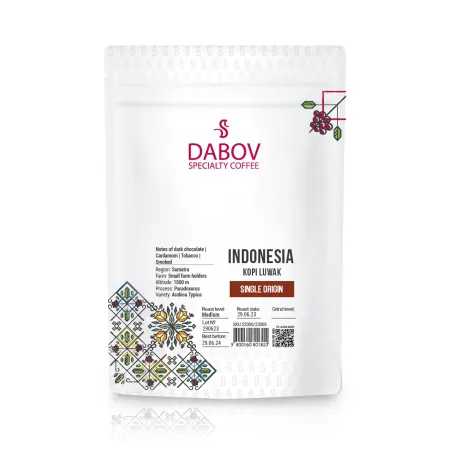How to Evaluate Coffee Body in Tasting Sessions
Unlock the secrets of coffee tasting with our detailed guide on evaluating coffee body. Discover how coffee body influences flavor and the sensory experience. Learn what to look for in different coffee types and origins, equipping yourself with essential evaluation techniques. Perfect for both coffee drinkers and professionals, this article will elevate your tasting skills. From preparation to conducting tastings and avoiding common pitfalls, we cover everything you need to know for a successful coffee tasting session. Join us in enhancing your coffee journey by mastering the nuances of coffee body evaluation.
Coffee, with its rich tapestry of flavors and aromas, has captivated the senses of enthusiasts and professionals alike for centuries. Among the myriad characteristics that define a coffee's profile, body stands out as a crucial yet often misunderstood attribute. In this comprehensive guide, we'll delve deep into the art and science of evaluating coffee body during tasting sessions, equipping you with the knowledge and skills to elevate your coffee appreciation to new heights.
Introduction: What is Coffee Body?
Coffee body refers to the physical properties of the brew as it interacts with your palate. It's the weight, texture, and overall mouthfeel of the coffee that contributes significantly to the sensory experience. Imagine the difference between skim milk and heavy cream – that's akin to the range of body you might encounter in various coffees. Understanding and evaluating coffee body is essential for anyone serious about coffee, from casual drinkers to professional roasters and baristas. It's a key component in determining the overall quality and character of a coffee, influencing how we perceive other attributes such as acidity, sweetness, and flavor intensity.
Understanding Coffee Body
Definition of Coffee Body
Coffee body is more than just a vague notion of how "heavy" a coffee feels in your mouth. It's a complex interplay of factors that contribute to the tactile sensation of the coffee on your palate. When we talk about body, we're referring to the viscosity, density, and texture of the liquid. A coffee with a full body might feel thick, syrupy, or even creamy, coating your mouth with a lingering sensation. On the other hand, a light-bodied coffee might feel more like tea – clean, crisp, and quick to dissipate.
The perception of body is influenced by several factors, including the coffee's origin, processing method, roast level, and brewing technique. For instance, coffees from regions like Sumatra or Guatemala are often associated with a fuller body, while those from Ethiopia or Kenya might exhibit a lighter, more tea-like body. The presence of oils, dissolved solids, and even microscopic particles all play a role in shaping the body of a coffee.
It's important to note that body isn't a measure of quality in itself – a light-bodied coffee can be just as exquisite as a full-bodied one. Rather, it's about understanding and appreciating the unique characteristics that each coffee brings to the cup.
Importance of Evaluating Coffee Body
Evaluating coffee body is crucial for several reasons. Firstly, it provides valuable information about the coffee's overall profile and can help in identifying its origin and processing method. A skilled taster can often make educated guesses about a coffee's background based on its body alone.
Secondly, understanding body helps in pairing coffee with food or determining its suitability for different brewing methods. A full-bodied coffee might stand up well to milk in a latte, while a lighter-bodied coffee might shine in a pour-over or as a single-origin espresso.
For coffee professionals, evaluating body is essential in quality control, blend development, and roast profiling. It can inform decisions about how to roast a particular coffee to highlight its best qualities or how to combine different coffees in a blend to achieve a desired mouthfeel.
Moreover, body interacts with other taste attributes in complex ways. A full-bodied coffee might enhance the perception of sweetness or mask excessive acidity, while a light body might allow subtle flavor notes to shine through more clearly. Understanding these interactions is key to developing a nuanced appreciation of coffee.
The Coffee Tasting Process
Preparing for a Tasting Session
A successful coffee tasting session begins long before the first sip. Proper preparation is crucial to ensure accurate and consistent evaluations. Here's a detailed look at how to set the stage for an effective tasting:
- Selecting Coffee Beans: Choose freshly roasted beans, ideally within 1-2 weeks of roast date. If comparing multiple coffees, ensure they're at similar roast levels to avoid bias.
- Grinding: Grind the coffee immediately before brewing to preserve volatile compounds. Use a burr grinder set to a medium-coarse setting for consistency.
- Water Quality: Use filtered water with a neutral pH and balanced mineral content. Water quality can significantly impact the extraction and perceived body of the coffee.
- Brewing Method: For professional cupping, follow Specialty Coffee Association (SCA) guidelines. This typically involves a ratio of 8.25 grams of coffee per 150 ml of water, brewed for 4 minutes.
- Temperature Control: Brew with water at 200°F (93°C) for optimal extraction. Maintain a consistent serving temperature around 160°F (71°C) for evaluation.
- Environment: Choose a well-lit, odor-free space with minimal distractions. Avoid strong scents, including perfumes or food odors, which can interfere with sensory evaluation.
- Palate Preparation: Cleanse your palate with room temperature water before tasting. Avoid strong flavors or spicy foods for at least an hour before the session.
- Timing: Schedule tastings when your palate is most sensitive, typically mid-morning. Avoid tasting immediately after meals or when you're overly hungry.
- Consistency: If comparing multiple coffees, ensure all variables (grind size, water temperature, brewing time) are kept constant across samples.
- Documentation: Prepare tasting forms or digital tools to record your observations systematically.
By meticulously controlling these variables, you create an environment conducive to accurate and repeatable evaluations of coffee body and other sensory attributes.
Tools Needed for Coffee Tasting
Equipping yourself with the right tools is essential for a professional-grade coffee tasting experience. Here's a comprehensive list of equipment you'll need:
- Cupping Bowls: Standardized ceramic or glass bowls, typically 200-250 ml in capacity, allow for consistent evaluation across samples.
- Cupping Spoons: Special wide, shallow spoons designed for slurping coffee. Typically made of silver or stainless steel, they should be non-reactive and easy to clean.
- Scales: Precision digital scales accurate to 0.1 gram for measuring coffee and water.
- Grinder: A high-quality burr grinder capable of producing consistent particle sizes across multiple samples.
- Kettles: Gooseneck kettles with temperature control for precise pouring and temperature management.
- Thermometers: Digital probe thermometers for monitoring water and coffee temperatures.
- Timer: For tracking brew times and ensuring consistency across samples.
- Water Filtration System: To ensure water quality doesn't vary between tastings.
- Palate Cleansers: Unsalted crackers or slices of apple to reset your palate between samples.
- Evaluation Forms: Standardized forms or digital apps for recording tasting notes and scores.
- Roast Color Analyzer: For professionals, this tool helps quantify roast levels objectively.
- Refractometer: Measures total dissolved solids (TDS) in brewed coffee, providing insight into extraction levels.
- Aroma Kit: A collection of common coffee aromas to train and calibrate your sensory skills.
- Spittoons: For discarding samples after tasting, especially important during extended sessions.
- Lighting: Natural daylight or full-spectrum lights to accurately assess the coffee's appearance.
Investing in quality equipment ensures that your evaluations are based on the coffee's true characteristics rather than artifacts introduced by subpar tools or inconsistent methods.
Coffee Sensory Evaluation Techniques
Evaluating Coffee Body: A Step-by-Step Guide
Evaluating coffee body requires a systematic approach and attention to detail. Follow these steps to develop a comprehensive understanding of a coffee's body:
- Visual Assessment: Before tasting, observe the coffee's appearance. A darker color or visible oils might indicate a fuller body, while a clearer, tea-like appearance could suggest a lighter body.
- Aroma Evaluation: Smell the dry grounds and then the wet grounds after adding water. While aroma doesn't directly correlate with body, it can provide clues about the coffee's overall intensity.
- Break the Crust: After 3-4 minutes of brewing, use your cupping spoon to break the crust of grounds that has formed on the surface. Pay attention to the resistance you feel – a thicker crust might indicate a fuller body.
- First Sip: Take a small sip and let it coat your entire mouth. Pay attention to the initial sensation – is it light and fleeting, or does it immediately feel substantial?
- Slurping Technique: Using your cupping spoon, take a small amount of coffee and slurp it vigorously. This aerates the coffee and spreads it across your palate, enhancing your perception of body.
- Tongue Mapping: As the coffee moves across your tongue, notice how it feels on different areas. Does it feel uniform, or does the sensation change?
- Viscosity Assessment: Pay attention to how the coffee moves in your mouth. Does it feel thin and watery, or thick and syrupy?
- Lingering Sensation: After swallowing (or spitting), notice how long the sensation remains on your palate. A longer-lasting impression often indicates a fuller body.
- Temperature Consideration: Evaluate the body at different temperatures as the coffee cools. Some attributes become more pronounced as the coffee cools down.
- Comparative Analysis: If possible, taste multiple coffees side by side to calibrate your perception of body across a range of samples.
- Repeated Tasting: Revisit each coffee multiple times throughout the session. Your perception may evolve as your palate adjusts and the coffee changes temperature.
- Descriptive Language: Use specific, concrete terms to describe the body. Instead of just "full" or "light," consider descriptors like "silky," "creamy," "juicy," or "tea-like."
By following this structured approach, you'll develop a nuanced understanding of coffee body that goes beyond simple categorizations. Remember, consistency in your evaluation technique is key to developing reliable assessments over time.
Key Sensory Attributes Related to Body
While body is a distinct characteristic, it's closely intertwined with other sensory attributes of coffee. Understanding these relationships enhances your overall evaluation skills:
- Acidity: High acidity can make a coffee feel lighter-bodied, while low acidity might contribute to a perception of fullness. However, a coffee can be both highly acidic and full-bodied, so consider these attributes separately.
- Sweetness: A sweet coffee might feel fuller-bodied due to the presence of complex sugars. Conversely, a very full-bodied coffee might mask subtle sweetness.
- Flavor Intensity: Generally, fuller-bodied coffees have more intense flavors, but this isn't always the case. A light-bodied coffee can still pack a punch in terms of flavor complexity.
- Aftertaste: The lingering sensation after swallowing is closely related to body. Fuller-bodied coffees often have longer-lasting aftertastes.
- Astringency: Sometimes confused with body, astringency is the drying sensation on the tongue. It can make a coffee feel lighter-bodied even if it's not.
- Bitterness: Excessive bitterness can overshadow the perception of body. Learn to distinguish between a full body and bitterness from over-extraction.
- Texture: This includes characteristics like smoothness, grittiness, or silkiness, which contribute to the overall perception of body.
- Mouthfeel: A broader term that encompasses body but also includes other tactile sensations like temperature and the way the coffee coats the mouth.
- Clarity: A coffee with high clarity allows you to distinguish individual flavor notes easily. This is often associated with lighter bodies but isn't exclusive to them.
- Complexity: The interplay of multiple flavor notes and sensations. A complex coffee might have a layered body that evolves as you taste.
By considering these attributes in relation to body, you'll develop a more holistic understanding of the coffee's profile. Remember that no single attribute exists in isolation – it's the harmony (or contrast) between these elements that creates a truly memorable cup of coffee.
Different Coffee Bodies by Type and Origin
Light, Medium, and Full Bodied Coffees
Coffee body exists on a spectrum, typically categorized as light, medium, or full. Understanding these categories helps in appreciating the diverse range of coffee experiences:
- Light-Bodied Coffees:
- Characteristics: Delicate, tea-like, clean finish
- Mouthfeel: Often described as crisp, bright, or refreshing
- Common Origins: Many African coffees, especially from Ethiopia and Kenya
- Brewing Methods: Often shine in pour-over or drip methods
- Flavor Notes: Usually associated with floral, fruity, or citrusy notes
- Example: A washed Ethiopian Yirgacheffe might exhibit a light, almost ethereal body with jasmine and lemon notes
- Medium-Bodied Coffees:
- Characteristics: Balanced, smooth, versatile
- Mouthfeel: Often described as silky or juicy
- Common Origins: Central American coffees, some South American varieties
- Brewing Methods: Adaptable to various methods, from pour-over to espresso
- Flavor Notes: Can range from nutty and chocolatey to fruity and caramel-like
- Example: A Colombian Supremo might offer a medium body with notes of caramel and mild citrus
- Full-Bodied Coffees:
- Characteristics: Rich, heavy, lingering finish
- Mouthfeel: Often described as creamy, syrupy, or velvety
- Common Origins: Indonesian coffees, especially Sumatran; some African varieties like Kenyan
- Brewing Methods: Excel in methods that emphasize body, like French press or espresso
- Flavor Notes: Often associated with earthy, spicy, or dark chocolate notes
- Example: A Sumatran Mandheling might present a full, syrupy body with notes of cedar and dark chocolate
It's important to note that these categories are not rigid. Many factors, including processing method, roast level, and brewing technique, can influence a coffee's perceived body. For instance, a naturally processed Ethiopian coffee might have a fuller body than its washed counterpart from the same region.
Influence of Coffee Origin on Body
The origin of coffee plays a significant role in determining its body, influenced by factors such as altitude, soil composition, climate, and traditional processing methods:
- African Coffees:
- Ethiopian coffees often have a light to medium body with vibrant acidity and complex flavor profiles.
- Kenyan coffees can range from medium to full-bodied, known for their bold flavors and wine-like acidity.
- Rwandan coffees typically offer a medium body with a creamy mouthfeel and bright acidity.
- Central American Coffees:
- Costa Rican coffees usually have a medium body with clean, bright flavors.
- Guatemalan coffees can vary but often present a medium to full body with complex acidity.
- Honduran coffees typically offer a medium body with balanced flavors and mild acidity.
- South American Coffees:
- Colombian coffees generally have a medium body with well-balanced flavors and acidity.
- Brazilian coffees often have a medium to full body with low acidity and nutty, chocolatey notes.
- Peruvian coffees usually present a medium body with mild acidity and subtle complexity.
- Asian Coffees:
- Indonesian coffees, particularly from Sumatra, are known for their full body and earthy flavors.
- Vietnamese coffees, often Robusta, have a strong, full body with bold flavors.
- Indian coffees can vary but often offer a full body with low acidity and spicy notes.
- Island Coffees:
- Jamaican Blue Mountain coffee is known for its medium body, mild flavor, and lack of bitterness.
- Hawaiian Kona coffee typically has a medium body with a smooth, clean taste and subtle complexity.
Understanding these regional tendencies can help in predicting and appreciating the body of coffees from different origins. However, it's crucial to remember that variations within regions can be significant, and factors like processing method and roast level can dramatically alter a coffee's body.
Conducting a Tasting Session
Structuring the Tasting Session
Organizing a structured tasting session is crucial for consistent and meaningful evaluations of coffee body. Here's a detailed guide to conducting a professional-level tasting:
- Preparation:
- Set up the tasting area with all necessary equipment.
- Arrange samples in a logical order, typically from lightest to darkest roast.
- Prepare evaluation forms or digital tools for recording observations.
- Introduction (5-10 minutes):
- Brief participants on the purpose of the tasting and the coffees being evaluated.
- Explain the evaluation process and any specific focus areas (e.g., body assessment).
- Review the use of evaluation forms or tools.
- Dry Fragrance Evaluation (5 minutes):
- Smell the dry grounds of each coffee, noting any observations about aroma intensity.
- Brewing (4 minutes):
- Add hot water to each sample simultaneously.
- Allow coffees to steep for 4 minutes without disturbing.
- Wet Aroma Evaluation (3-5 minutes):
- Break the crust of each sample, noting aromas and resistance.
- Remove floating grounds from the surface.
- Initial Tasting (10-15 minutes):
- Begin tasting samples when they've cooled to about 160°F (71°C).
- Use the slurping technique to aerate the coffee.
- Focus on body and mouthfeel in this first round.
- Detailed Evaluation (20-30 minutes):
- Revisit each coffee multiple times as it cools.
- Evaluate all aspects, including flavor, acidity, and aftertaste.
- Pay special attention to how body interacts with other attributes.
- Group Discussion (15-20 minutes):
- Share observations and compare notes.
- Discuss how body contributes to each coffee's overall profile.
- Final Assessment (10 minutes):
- Assign final scores or ratings if using a formal evaluation system.
- Summarize key findings about body across the samples.
- Clean-up and Reset (10 minutes):
- Clear the tasting area and prepare for any subsequent sessions.
Throughout the session, encourage participants to stay hydrated and use palate cleansers between samples. Emphasize the importance of consistency in evaluation techniques to ensure comparable results across tasters and sessions.
Recording Observations and Findings
Accurate and detailed record-keeping is essential for meaningful coffee evaluation. Here's a guide to effectively documenting your observations, with a focus on body:
- Use Standardized Forms: Employ industry-standard evaluation forms like the SCA Cupping Form or create a custom form that includes dedicated sections for body assessment.
- Quantitative Scoring: Use a numerical scale (e.g., 1-10) to rate body intensity. This allows for easy comparison across samples and sessions.
- Qualitative Descriptors: Alongside numerical scores, use specific descriptive terms. For body, this might include:
- Texture: Silky, creamy, juicy, syrupy, watery
- Weight: Heavy, substantial, light, delicate
- Mouthfeel: Smooth, rough, clean, lingering
- Temporal Notes: Record how the body evolves as the coffee cools. For example: "Full-bodied initially, becoming more tea-like as it cools."
- Comparative Language: Use relative terms to place the coffee's body in context. For instance: "Fuller-bodied than Sample A, but lighter than Sample C."
- Flavor Interactions: Note how the body interacts with other attributes. Example: "Full body enhances perception of chocolate notes."
- Visual Aids: Use charts or diagrams to visualize the body in relation to other characteristics. A spider chart can be particularly effective for this.
- Tasting Notes: Include a section for free-form tasting notes where you can describe the overall experience, including how the body contributes to the coffee's profile.
- Consistency Check: If tasting the same coffee multiple times, compare notes to ensure consistency in your evaluations.
- Digital Tools: Consider using apps or software designed for coffee evaluation. These can help standardize your records and make trend analysis easier over time.
- Photography: Take photos of the brewed coffee to accompany your notes. This can be helpful for remembering visual cues related to body.
- Context Notes: Record environmental factors (temperature, humidity) and brewing parameters, as these can affect perceived body.
Remember, the goal is to create a record that is both detailed and accessible. Your notes should allow you to recall the coffee's characteristics accurately, even months after the tasting. With practice, you'll develop a personal shorthand that captures the nuances of body and other attributes efficiently and effectively.
Common Pitfalls in Evaluating Coffee Body
Overlooking Other Sensory Factors
When evaluating coffee body, it's easy to become overly focused on this single attribute at the expense of other important sensory factors. This tunnel vision can lead to incomplete or inaccurate assessments. Here are some common pitfalls and strategies to avoid them:
- Neglecting Flavor Complexity:
- Pitfall: Focusing solely on body can cause you to miss subtle flavor notes that contribute to the coffee's overall profile.
- Solution: Practice evaluating body in conjunction with flavor. Note how different flavor components interact with the perceived body.
- Underestimating Acidity's Impact:
- Pitfall: High acidity can mask the perception of body, leading to underestimation of a coffee's true body.
- Solution: Develop the skill to assess acidity and body independently. Consider how they balance each other in the overall taste experience.
- Confusing Bitterness with Body:
- Pitfall: Mistaking the intensity of bitterness for fullness of body, especially in darker roasts.
- Solution: Train your palate to distinguish between the weight of the coffee on your tongue (body) and the taste sensation of bitterness.
- Overlooking Aromatics:
- Pitfall: Focusing on mouthfeel to the exclusion of aroma, which plays a crucial role in our perception of flavor and body.
- Solution: Incorporate aroma evaluation into your body assessment. Note how aromatic intensity correlates with perceived body.
- Ignoring Aftertaste:
- Pitfall: Evaluating body only during the initial taste, neglecting how it evolves in the aftertaste.
- Solution: Pay attention to the lingering sensations after swallowing. A full-bodied coffee often has a more pronounced and lasting aftertaste.
- Temperature Oversight:
- Pitfall: Failing to assess body as the coffee cools, missing how it changes with temperature.
- Solution: Evaluate the coffee at multiple temperature points, noting how the perceived body evolves.
- Texture Tunnel Vision:
- Pitfall: Focusing solely on weight or thickness, ignoring other textural elements that contribute to body.
- Solution: Expand your body evaluation to include aspects like smoothness, grittiness, and how the coffee coats your mouth.
- Neglecting Visual Cues:
- Pitfall: Overlooking the visual aspects of the coffee that can provide clues about body.
- Solution: Incorporate visual assessment into your evaluation. Note the coffee's opacity, any oils on the surface, and how it clings to the cup.
- Roast Level Bias:
- Pitfall: Automatically associating darker roasts with fuller body, neglecting the nuances in lighter roasts.
- Solution: Practice evaluating body across a range of roast levels to understand how roast impacts body independently of other factors.
- Brewing Method Myopia:
- Pitfall: Failing to consider how different brewing methods can affect the perceived body of the same coffee.
- Solution: When possible, evaluate the same coffee using multiple brewing methods to understand how preparation impacts body.
By being aware of these potential pitfalls and actively working to avoid them, you'll develop a more holistic approach to coffee evaluation. Remember, body is an important component of a coffee's profile, but it's just one piece of a complex sensory puzzle. The goal is to understand how body contributes to and interacts with the coffee's overall character, rather than isolating it as a standalone attribute.
Misinterpretation of Body Descriptors
The language used to describe coffee body can be subjective and sometimes misleading. Misinterpretation of body descriptors can lead to confusion and inconsistent evaluations. Here's a guide to understanding and using body descriptors more accurately:
- Ambiguity in Common Terms:
- Problem: Terms like "full," "medium," and "light" are relative and can mean different things to different people.
- Solution: Establish clear definitions within your tasting group or use a numerical scale alongside these terms for more precise communication.
- Overuse of Generic Descriptors:
- Problem: Relying too heavily on broad terms like "smooth" or "rich" without further elaboration.
- Solution: Pair general descriptors with more specific terms. For example, "smooth with a silky texture" or "rich with a creamy mouthfeel."
- Conflating Body with Strength:
- Problem: Mistaking a coffee's strength (concentration) for body.
- Solution: Clarify that body refers to the weight and texture of the coffee, not its intensity of flavor or caffeine content.
- Cultural and Regional Biases:
- Problem: Body descriptors may have different connotations in various coffee cultures or regions.
- Solution: When working internationally, establish a common lexicon and provide clear definitions for terms used.
- Misusing Technical Terms:
- Problem: Incorrectly applying scientific terms like "viscosity" without proper understanding.
- Solution: If using technical terms, ensure they are accurately defined and consistently applied. Consider providing training on these concepts.
- Overlooking Nuance in Body Description:
- Problem: Using binary descriptions (e.g., full vs. light) instead of recognizing the spectrum of body.
- Solution: Develop a more nuanced vocabulary that includes intermediate terms and specific textural descriptions.
- Inconsistency in Comparative Descriptions:
- Problem: Using relative terms without a clear reference point.
- Solution: When using comparative language, always specify the benchmark. For example, "fuller-bodied than a typical Ethiopian Yirgacheffe."
- Neglecting Temporal Aspects:
- Problem: Failing to describe how body changes over time or with temperature.
- Solution: Include time-based descriptors, such as "initially full-bodied, becoming more delicate as it cools."
- Overemphasis on Positive Descriptors:
- Problem: Tendency to use only positive terms, even when a lighter body might be appropriate for the coffee style.
- Solution: Recognize that different body characteristics can be desirable in different contexts. Use neutral, descriptive language.
- Lack of Contextual Information:
- Problem: Describing body without considering brewing method or other relevant factors.
- Solution: Always provide context for body descriptions, including brewing method, water-to-coffee ratio, and any other pertinent details.
To improve the accuracy and consistency of body descriptions, consider developing a standardized lexicon for your team or organization. This might include:
- A scale of body intensity (e.g., 1-10) with clear definitions for each point.
- A list of approved textural descriptors with examples and definitions.
- Visual aids or reference samples to calibrate perceptions of different body types.
- Regular calibration sessions to ensure all tasters are using terms consistently.
By addressing these common misinterpretations and establishing clear guidelines for describing coffee body, you can enhance the precision and value of your coffee evaluations. Remember, the goal is not just to use impressive-sounding terms, but to communicate the sensory experience accurately and meaningfully to others in the coffee community.
Conclusion
Evaluating coffee body is a nuanced and complex skill that forms a crucial part of coffee sensory analysis. Throughout this comprehensive guide, we've explored the multifaceted nature of coffee body, from its definition and importance to practical techniques for assessment and common pitfalls to avoid.
We've learned that body is more than just a measure of how "heavy" a coffee feels; it's a composite of texture, weight, and mouthfeel that interacts with other sensory attributes to create the overall coffee experience. Understanding body helps us appreciate the unique characteristics of coffees from different origins and processing methods, and informs decisions in roasting, brewing, and blending.
Key takeaways include:
- The importance of a structured approach to coffee tasting, including proper preparation and use of appropriate tools.
- The need for a comprehensive sensory evaluation that considers body in relation to other attributes like acidity, flavor, and aroma.
- The influence of origin, processing, and brewing method on coffee body.
- The value of precise, consistent language in describing body to facilitate clear communication among coffee professionals and enthusiasts.
- The potential pitfalls in body evaluation and strategies to avoid them, including the misinterpretation of descriptors and overlooking other sensory factors.
As we conclude, it's important to remember that developing expertise in evaluating coffee body is an ongoing journey. Like any skill, it requires practice, patience, and a willingness to continuously refine your perceptions and understanding.
Call to Action
Now that you're equipped with a deeper understanding of coffee body evaluation, it's time to put this knowledge into practice:
- Join Tasting Groups: Seek out local coffee tasting groups or cupping sessions. Comparing notes with others is an excellent way to calibrate your perceptions and learn new descriptors.
- Experiment with Brewing Methods: Try brewing the same coffee using different methods to understand how preparation affects body.
- Create a Tasting Journal: Start documenting your coffee experiences, focusing on detailed descriptions of body and how it interacts with other attributes.
- Explore Diverse Origins: Make a point of tasting coffees from various regions to experience the full spectrum of body characteristics.
- Attend Workshops and Seminars: Look for professional development opportunities in sensory evaluation, such as SCA courses or local barista workshops.
- Develop Your Palate: Practice tasting a wide range of foods and beverages to enhance your overall sensory acuity.
- Share Your Experiences: Engage with the coffee community online or in person. Sharing your tasting notes and learning from others' experiences can accelerate your learning.
- Consider Certification: If you're a coffee professional, explore certification programs that include advanced sensory evaluation training.
Remember, the world of coffee is vast and ever-evolving. By honing your skills in evaluating coffee body, you're not just improving your ability to assess coffee quality – you're deepening your appreciation for one of the world's most beloved beverages. So grab your cupping spoon, prepare your samples, and embark on your next coffee tasting adventure. The journey of sensory discovery awaits!



